Let's talk Root Zone
xerophyte NYC
7 years ago
Featured Answer
Sort by:Oldest
Comments (14)
greenman28 NorCal 7b/8a
7 years agoLauren (Zone 9a)
7 years agoRelated Discussions
Growers in the PNW let's talk taro!
Comments (5)I've had great luck lately with indoor storage of Alocasia, Colocasia and also a wide variety of other plants. We kill many plants, at first, until we find what works well for us. So I've found it important to test first, before I throw abandon to the compost pile. What works. A year ago, I picked up a bag of 3 large orange fruit-sized Colocasia tubers. I potted them in March in Miracle Gro Moisture Control potting soil, watered them once and then kept them quite dry. They were very slow to sprout in the shed w 55 F night temps, next to a sliding door. But they stayed firm and heathy. They were 2" under the soil, so I could poke down and feel bulb top firmness. Once solar gain brought the shed day temperatures up into the upper 70's, all three tubers started to take off. They grew well outside in full sun in our cool PNW summer. The single bulbs also gained side bulbs and are now large enough to be separated, or the plant be directly put in the and test thar z7-10 rating. Didn't the first year, but now multiplied, will the next year. I brought them inside before the first frost with the shed running 60-65/55 F day/night (I also have some lights and tropical lights in there so there's some heat gain with the lights on during the day). I'm keeping the Colocasia green and still growing, but they are quite dry and there's a nice seed cluster or two formed with bright orange fleshy seed coats. I can choose to maintain them this way or let them dry in place if they look stressed. Either method has worked. This shed environment also stores non-potted Colocasia, Alocasia, Arum and all other bulbs, tubers or perennials that I've tested or Fall or Spring planting. I just open the shipping boxes and store the bulbs as is still in the original individual bags as shipped. These are loosely placed one or two layers deep, checking them once a week, until it's time to plant them outside. If they sprout early, I pot them and grow near the sliding door or under plant lights in the shed. Humidity from the live plants in the shed seems to put less "low humidity stress" on the plants and bagged "rootstock" stored there. I find acquired rootstock are packed in cedar chips for the dry types or lightly moist peat moss e.g., with Canna, Phlox and Foxtail Lilies. The bags already have the appropriate surface pores to help hold correct humidity. If I store bulbs in drier or more humid places, I stack the bags deeper or add an outer bag closed as needed to maintain moisture correctly. If in a very low humidity environment put in a lightly wet sponge wrapped in newspaper into the outer bag. If I have an important invesment to protect I can choose quite accurately measure rather than guess what to do individually for single rootstock bags or whole collections. Moisture is heavy so monitor and record weight over with sn appropriately sensitive scale, postage to bathroom scale depending measurement needed. Storage media be it air alone, cedar chips, newspaper, or dry or lightly moist peat moss work great when applied to the right respective rootstock. The best moisture level to maintain is only that needed to keep firm rootstock turgor. Error on the slightly dry rather than wet side. Light surface mist can be applied for peat stored rootstock, if they become too dry. Watch for molds. Increased air exposure and/or decreased moisture often can solve the problem. Mold and soft slimy rootstock? Isolate or throwaway sooner than later to not infect the rest. Also in the shed, I've stored Arum tubers I've dug just letting them sit free in the air in a shallow cardboard box. These include Drancunlaris vulgaris and Amorphophallus rivieri 'Konjac'. They and canna can instead be left in the ground here. However, stored as above helps in propigatation. Brugmansia can be stored in the same shed with the 55 nights or in the dark along along with cuttings in our unheated at 45 F garage. Ensete ventricosum 'Maurelii' (Abyssinian Red Banana) can also be leaf and root trimmed and garage stored. For Brugmansia with either storage method, I generally ad no water, unless their fat stems lose a little turgor. Then I add the bare minimum water. Brugmansia drop all their leaves in either case. If watered at 55 F in the light, they grow fine, but tend to develop mite troubles. However, if overwatered even marginally, Brugs at 45 F might rot. Thus, cuttings work best for me at 45, unless I want to start the next year with a larger Brug tree branch structure. In the latter, case I set aside back up cuttings when shaping the Brugs to be stored potted. The size of garage plants stored generaly is limited by space limitation and what you can lift. Have strong friends?...See MoreLet's talk Four O'Clocks.
Comments (33)zookeeper, maybe you've got the beetles confused with the Asian ladybugs? I don't think they eat other bugs but plant material, could be wrong. I've read this from several different sources otherwise wouldn't use wiki. "The insect was first found in the United States in 1916 in a nursery near Riverton, New Jersey. It is thought that beetle larvae entered the United States in a shipment of iris bulbs prior to 1912 when inspections of commodities entering the country began." Goes on talking about how first spotted in Nova Scotia in 1939. From New Jersey, they have slowly and relentlessly fanned out, working their way north, south and westward. But they're not much of a problem in FL or the Gulf states and much west of Iowa. The Rockies and deserts provide a natural barrier of sorts, but it appears they've gotten into the Pacific NW and working their way down to CA. Here's Purdue's alltime distribution map, don't like wiki's map because it just shows eastern US. Known natural predators include the Praying Mantis, but it would take a ton of them. Also (I read a lot of this on the OGR forum) people report their ducks, wild turkeys, starlings eat them. The turkeys poop them out dead but undigested, saw a very yucky photo of that someone posted from the east coast who was having a horrid time that year. I used to see brown birds, possibly an unfamiliar (to me) woodpecker) feeding in lots of lawns around here and under my birch trees, wondered what they were eating. I now think they were eating the grubs, but I haven't seen those lately, had been feeding them. They are carnivores. People didn't like them and put up fake owls to scare them away . . . But I'm with you 100% about importing things without considering negative consequences, some of which aren't known until it's too late. That's why I'm cautious about the U of MI experiment and the tachinid fly, much as I'm hoping for relief. I'm thinking when they really hit the grape, almond and fruit crops in CA, there will be more agitation to find the best eradicator. They will spray, and that means more stuff to worry about on and in our food. Sevin on the instructions tells exactly when to quit spraying on food crops, like I'm supposed to go by that? I only spray my cherry trees after they have fruited which may have been earlier than usual last year before they showed up Jun 21 in my yard. It was about a week later the year before. Sorry the map makes you scroll to the right but one of the best ones I know. Here is a link that might be useful: Japanese Beetle - Wikipedia...See MoreLet's talk about Dormancy with Mr. Charles Barnhoorn
Comments (55)Back to the topic... Sir Hans...Thanks for that info. You are right(as always). I have seen a pic of hippeastrums(for cut flower) with scapes and almost no leaves. I think it is in Ludwig's website. "defoliated for hygienical reasons"...How is this so? During winter time, I do not have enough growing area inside that can give my amaryllises enough sunlight. I wish I did. I do not have a greenhouse or indoor grow lights. Again, I wish I did. As much as I want my amaryllises to continously grow all year long, I can not do so. Putting them to dormancy is a MUST for me. This is my plan for this winter. Since the unheated garage is dark, I will have to let the leaves dry out and then cut them. Give them maybe a week or so to dry out a bit and then unpot, dip in fungicide, repot in fresh soil. Water a little bit and mulch to keep moisture in the roots. I have fed them well and given them as much right caring as I know this spring/summer. I think I will be getting a very good performance from them next spring....See MoreLet's see your cuttings rooted or un rooted for 2018!
Comments (46)Kara, it was really nice to find, even if it isn't accurate, at least by how they're named now. It got me to find out that it's really a Haworthiopsis coarctata v. tenuis. The other old label I found was Aloe descoingsii x A. hawothioides. Rina, I didn't even really realize it was etiolated until Pagan told me. He also said this variety likes sun, or at least brighter light than many other ones. So it will be pretty much brown, but I'd rather have that and it be more compact. I'd be happy if they look as good as yours, even if it isn't a plant I especially like. The old plant is tired and I don't know if it will produce any more offsets, but I'll repot it. It was easy enough to do stem cuttings....See Morexerophyte NYC
7 years agoBarb in Eastern North Carolina, zone 8
7 years agoxerophyte NYC
7 years agonomen_nudum
7 years agoewwmayo
7 years agolast modified: 7 years agoLauren (Zone 9a)
7 years agoLauren (Zone 9a)
7 years agoewwmayo
7 years agoLauren (Zone 9a)
7 years agonomen_nudum
7 years agoxerophyte NYC
7 years ago
Related Stories
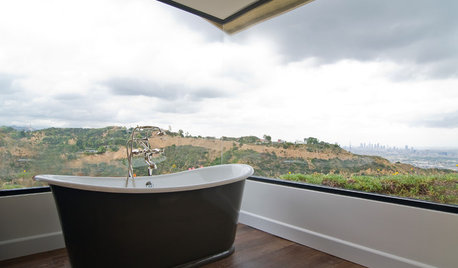
PRODUCT PICKSGuest Picks: Let’s Talk Tubs
Find just the right bathtub no matter how you like to soak
Full Story
FURNITUREExpert Talk: Dreaming of a Daybed
Whatever color, pattern or style flits through your fancy, today's daybeds let you have it — and practicality too
Full Story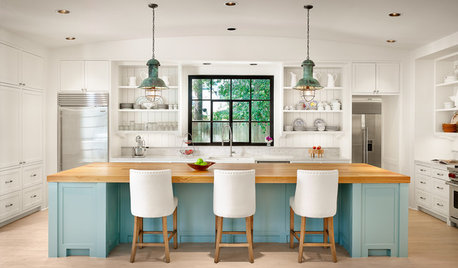
MOST POPULARHouzz TV: Let’s Go Island Hopping
Sit back and enjoy a little design daydreaming: 89 kitchen islands, with at least one for every style
Full Story
BASEMENTSDesign Workshop: Is It Time to Let Basements Become Extinct?
Costly and often unnecessary, basements may become obsolete — if they aren’t already. Here are responses to every reason to keep them around
Full Story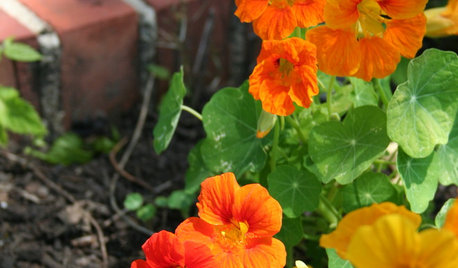
GARDENING GUIDESDon’t Let These Excuses Keep You From Gardening
Stop blaming your lack of experience, space, time and funds, and get on with the joy of garden making
Full Story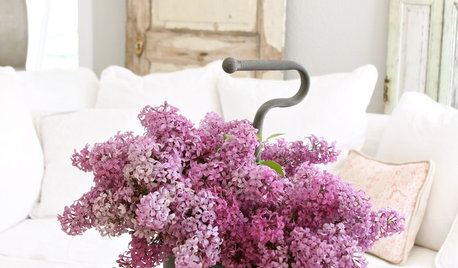
GARDENING GUIDESLet Lilac Love Flower This Spring
Whatever you bestow or receive for Mother's Day, lilacs can be an unmatched gift in the garden in May
Full Story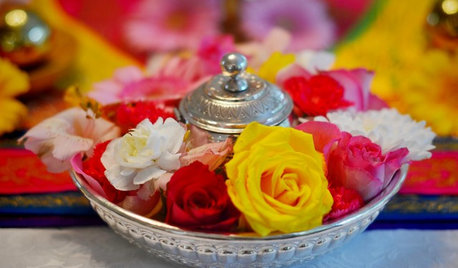
FEEL-GOOD HOMERejuvenate Your Home With Deep-Rooted Traditions
Give the subtle energies and spiritual side of your home some attention, and watch newfound calm and beauty blossom
Full Story
COLORTime to Step Out of Your Color Comfort Zone?
If you always seem to pick warm tones, or you stick to the cool ones, bucking your natural inclination could bring new energy to a room
Full Story
ARCHITECTURERoots of Style: Do You Live in a Minimalist Traditional House?
Cottages, bungalows, farmhouses ... whatever you call them, houses in this style share several characteristics. See how many your house has
Full Story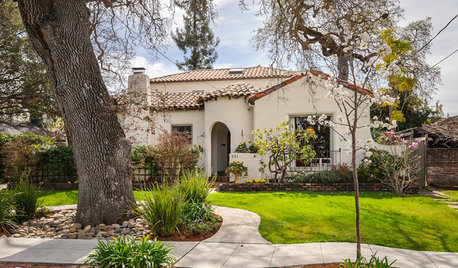
ARCHITECTURERoots of Style: Spanish Eclectic Homes Find a Place in the Sun
Flexible stucco, intricate tiles and more have kept this multicultural style going strong for a century
Full Story




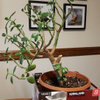
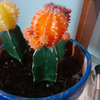
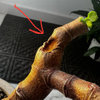
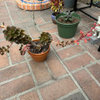
Pagan